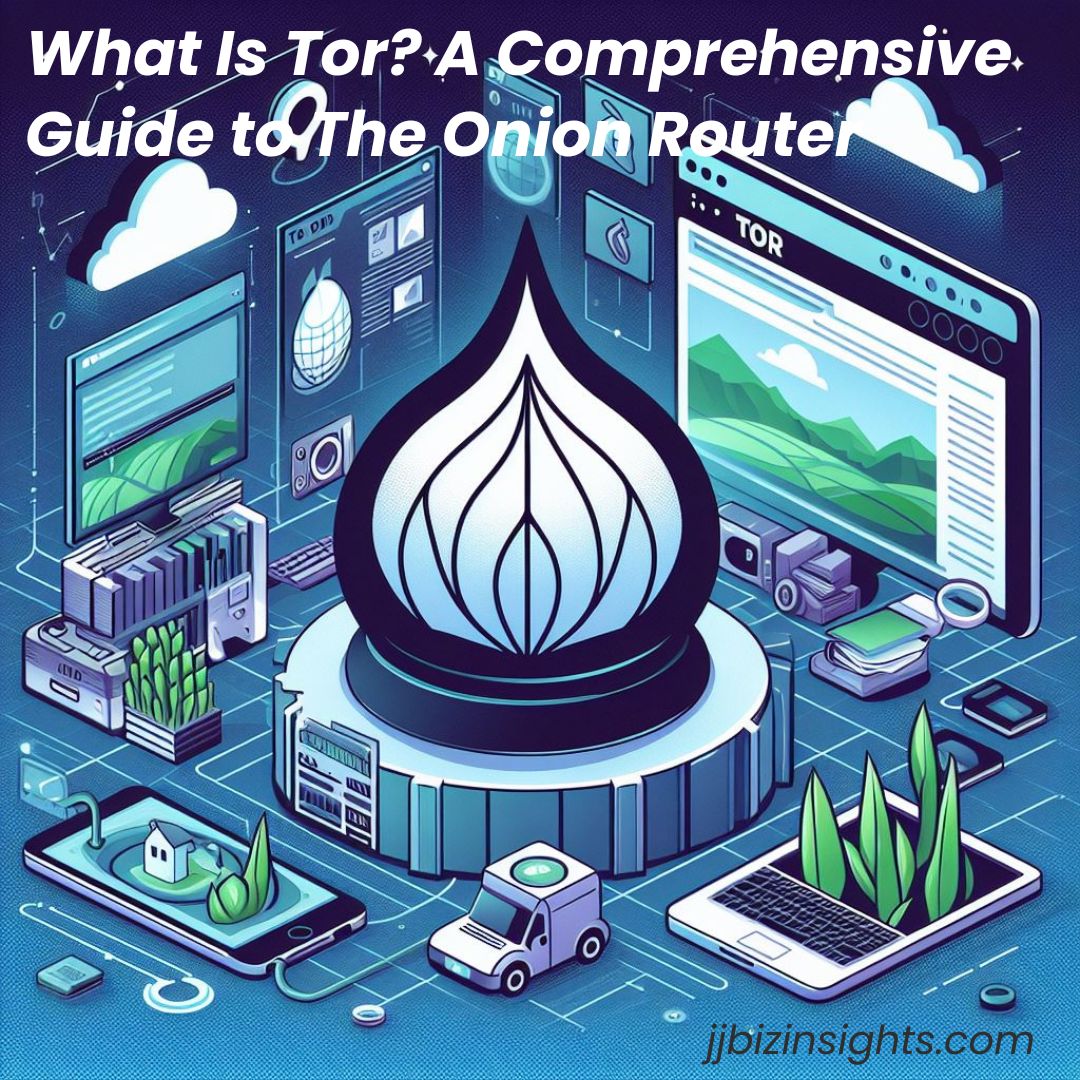
What Is Tor? A Comprehensive Guide to The Onion Router
What Is Tor? A Comprehensive Guide
Introduction: What Is Tor?
What Is Tor? Tor, short for The Onion Router, is a powerful and privacy-focused tool that enables anonymous communication on the internet. Whether you’re concerned about surveillance, censorship, or simply want to browse privately, Tor provides a robust solution. In this guide, we’ll delve into the details of Tor, how it works, and why it matters.
What Is Tor?

At its core, Tor is free and open-source software designed to provide anonymous communication. Here’s how it works:
- Overlay Network: Tor directs internet traffic through a global overlay network consisting of thousands of volunteer-operated relays. These relays bounce your data through multiple layers, making it incredibly difficult to trace back to its source.
- Onion Routing: The term “onion” refers to the layers of encryption applied to your data. Each relay decrypts a layer, revealing the next relay in the chain. This process continues until the data reaches its final destination. Even if an adversary intercepts the traffic, they can’t easily identify the original sender.
- Anonymity and Privacy: Tor ensures that your online activities remain private. It prevents anyone (including ISPs, governments, or hackers) from monitoring your browsing habits. When you use Tor, all they see is that you’re using the Tor network—not the specific sites you visit.
Why Use Tor?
1. Privacy and Anonymity
- Tor shields your identity by routing your internet traffic through a series of relays. Your IP address remains hidden, making it challenging for anyone to track your online behavior.
2. Circumventing Censorship
- In countries with strict internet censorship, Tor allows users to access blocked websites and services. By bypassing government filters, individuals can freely communicate and access information.
3. Protecting Sensitive Data
- Whether you’re a journalist, activist, or everyday user, Tor safeguards your communications. It’s especially crucial when sharing sensitive information or conducting research in hostile environments.
Getting Started with Tor

- Download Tor Browser: Visit the official Tor Project website and download Tor Browser. It’s available for Windows, macOS, Linux, and Android.
- Install and Configure: Install Tor Browser and follow the setup instructions. Remember to keep your browser updated for optimal security.
- Start Browsing: Once installed, open Tor Browser and start exploring the web anonymously. Remember that Tor doesn’t protect other applications on your device—only the traffic routed through the browser.
What Is Tor? Common Myths and Misconceptions
- Is Tor Illegal?: No, Tor itself is legal. However, its use can vary by country. Some illegal activities occur on the Tor network, but that doesn’t make Tor inherently illegal.
- Is Tor Only for Illegal Activities?: Absolutely not. Tor serves a wide range of legitimate purposes, from privacy-conscious browsing to accessing blocked content.
Conclusion: What Is Tor?
What Is Tor? Tor empowers users to reclaim their privacy and explore the internet without fear of surveillance. By understanding how Tor works and following best practices, you can navigate the digital world with confidence.
Remember: Privacy is a fundamental right, and Tor helps protect it.
About the Author: [Jeyaraj] Disclaimer: This blog post is for informational purposes only. Always use Tor responsibly and within legal boundaries.
How do I download the Tor Browser?
To download the Tor Browser, follow these steps:
- Visit the official Tor Project website.
- Choose your preferred platform:
- Windows: Click on “Download for Windows.”
- macOS: Click on “Download for macOS.”
- Linux: Click on “Download for Linux.”
- Android: Click on the relevant link for your architecture (aarch64, arm, x86_64, or x86).
- The download will begin automatically. Once it’s complete, install the Tor Browser following the on-screen instructions.
- After installation, open the Tor Browser. It will automatically connect to the Tor network, ensuring your online activities remain private and anonymous.
Remember to avoid torrenting over Tor, as it can compromise your privacy. Additionally, Tor Browser blocks certain browser plugins to protect your anonymity. For more troubleshooting tips, refer to the Tor Browser manual.
Stay safe and enjoy private browsing! 🌐🔒
Download Tor Browser to experience true private browsing without tracking, surveillance, or censorship. Join the global community committed to online privacy and freedom.
Tips for using Tor safely?

When using the Tor Browser, it’s essential to follow safety practices to protect your privacy and security. Here are some tips for using Tor safely:
Get a Tor-Friendly VPN:
- Before connecting to Tor, consider using a secure VPN. I recommend ExpressVPN, which allows Tor traffic on all its servers in 105 countries. It offers industry-leading security, privacy features, and fast speeds while using Tor.
Download and Install the Tor Browser:
- Obtain the Tor Browser only from Tor’s official site to avoid accidentally downloading malicious files.
- Install the browser and wait for it to connect to the Tor network (this may take a few seconds).
Surf the Web Securely:
- With the Tor browser, you can access any website, including dark web sites.
- Tor hides your traffic and IP address, providing better privacy.
- Optionally disable website features that might compromise your privacy.
- Prevent browser fingerprinting to some extent.
Circumvent Censorship:
- Tor allows users in restrictive countries to visit blocked online services, such as social media apps, news websites, and entertainment sites.
- Communicate with the internet through Tor’s servers to bypass firewall restrictions.
Remember that while Tor is legal in most countries, it can also be used for illegal purposes. Always research local laws and use Tor responsibly to access legal content
How do I know if my connection is secure on the Tor network?
To ensure your connection is secure while using the Tor Browser, follow these steps:
- Check the URL Bar:
- When you visit a website, look at the URL bar. If your connection is encrypted, the address will begin with “https://” instead of “http://”.
- The “https://” indicates that your connection is using HTTPS encryption, which protects against eavesdropping.
- Enable HTTPS-Only Mode:
- Tor Browser has an HTTPS-Only mode that forces all connections to use secure encrypted connections (HTTPS).
- Most websites already support HTTPS, and enabling this mode ensures that all your connections are upgraded to use HTTPS.
- If a site doesn’t have an HTTPS version available, you’ll see a “Secure Connection Not Available” page. You can choose to continue to the HTTP version of the site, but be cautious.
- Use the Tor and HTTPS Buttons:
- Click the “Tor” button to see what data is visible to observers when you’re using Tor. The button turns green when Tor is active.
- Click the “HTTPS” button to see what data is visible when you’re using HTTPS. The button also turns green when HTTPS is active.
- When both buttons are green, you’re using both Tor and HTTPS for maximum security.
Remember that while Tor enhances privacy, it’s essential to stay informed about its limitations and use it responsibly . Keep browsing securely! 🔒🌐
The Future of Tor
The Future of Tor: Ongoing development and improvements indeed bring forth a fascinating interplay of challenges and opportunities. Let’s delve into these realms:
- Challenges:
- Complexity Unveiled: As Tor evolves, its underlying architecture becomes more intricate. Navigating this complexity demands ingenuity and robust engineering.
- Security Vigilance: With an expanding user base, the battle against vulnerabilities intensifies. Safeguarding anonymity and data privacy remains paramount.
- Resource Constraints: Balancing limited resources—be it funding, skilled personnel, or infrastructure—poses an ongoing challenge.
- User Experience: Enhancing usability without compromising security is a delicate tightrope walk.
- Opportunities:
- Innovation Horizon: Ongoing development fuels innovation. Novel features, improved protocols, and creative solutions emerge.
- Global Impact: Tor’s reach extends beyond borders. It empowers activists, journalists, and citizens in oppressive regimes.
- Community Collaboration: The open-source ethos invites collaboration. Developers, researchers, and enthusiasts contribute to Tor’s evolution.
- Privacy Advocacy: Tor pioneers privacy-conscious technologies. Its growth aligns with the global demand for digital autonomy.
In this dynamic landscape, Tor’s trajectory intertwines challenges and opportunities, shaping a future where privacy and freedom thrive. 🌐🔒
Dark Web vs Deep Web: Unveiling the Deep Web’s Secrets
No Love Deep Web: Delving Deeper Than the Album
How To Get On The Dark Web: Know It All





